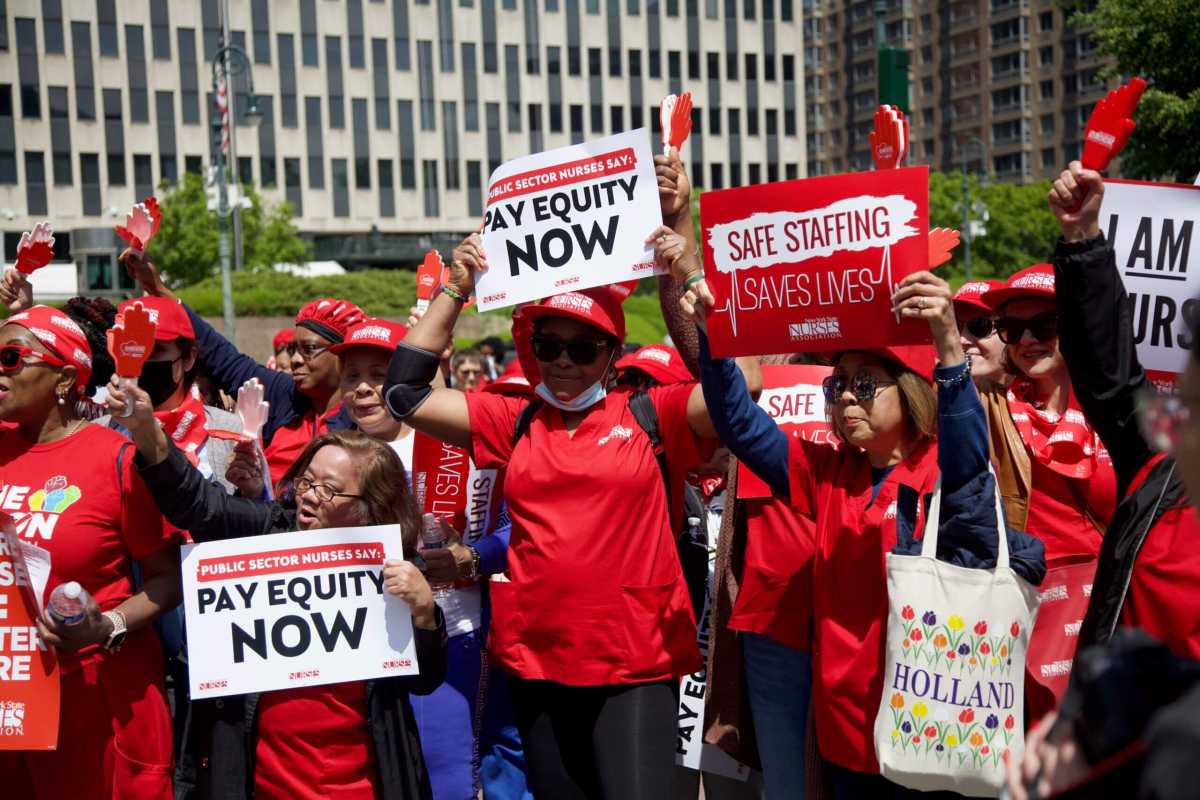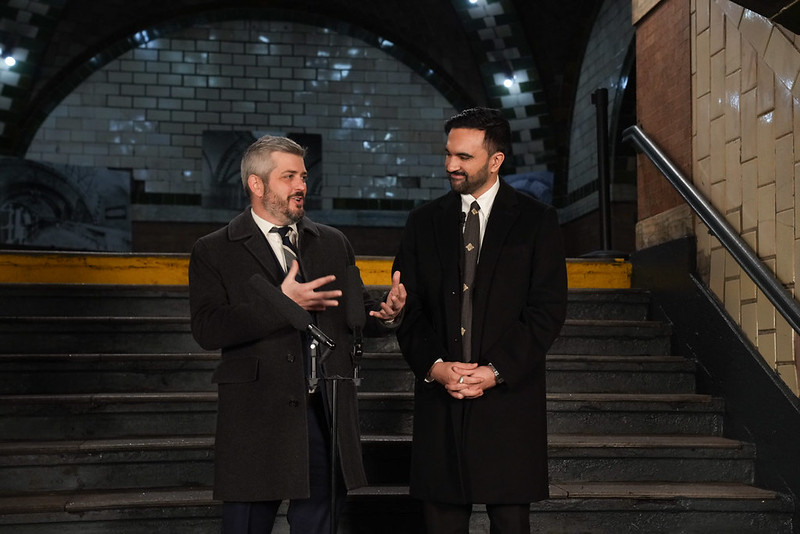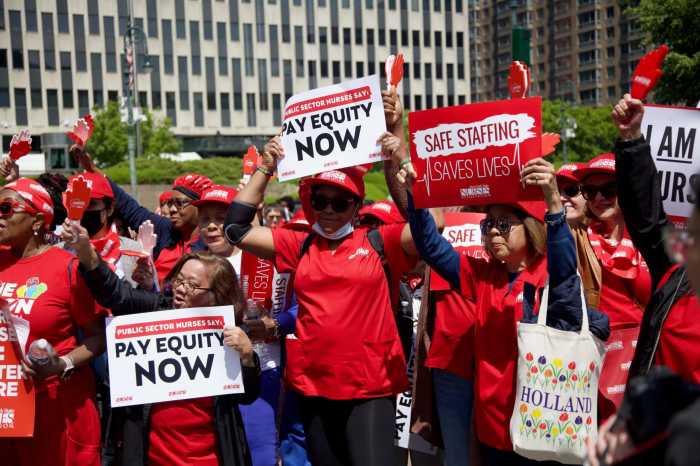The city’s Department of Buildings will begin enforcing a commercial sprinkler law passed in 2004 requiring all New York City landlords to install the fire prevention equipment.
Despite the 15-year window for property owners to get up to code, it was revealed at a November City Council committee hearing that about 1,100 buildings were still not in compliance with the Local Law 26 — and 86 building owners have completely ignored city notifications.
The window officially closed Dec. 1, and all commercial building owners are required to have installed sprinkler systems in their buildings throughout the city, including numerous city-owned structures.
“Our goal is compliance,” said Andrew Rudansky, a spokesman for the Department of Buildings. “Building owners who fail to comply with DOB orders regarding these sprinkler requirements may face additional violations, which carry additional associated civil penalties, until they come into compliance.”
Buildings officials revealed that 983 buildings have been issued Environmental Control Board violations for non-compliance with the sprinkler requirements. Officials indicate that these buildings are in various stages of compliance with the law, as many are actively engaged in sprinkler installation projects. The violations come with civil penalties of $1,250, which can be waived if building owners certify that they are in compliance with Local Law 26 within 40 days of the issuance.
Some of the more notable buildings on the list include the Trump Building at 40 Wall St. and the New York Stock Exchange – many of the older Wall Street buildings were listed as non-compliant. Some of the city buildings were owned by Department of Corrections, Parks and Education.
Continued noncompliance with these regulations could result in additional fines, with civil penalties of up to $25,000. Buildings will be subject to re-inspection every 60 days — which could add to the total monetary damages.
Experts in sprinkler installation told amNewYork full compliance with the law is difficult because older buildings may require expensive asbestos abatement; some businesses might also need to be relocated during renovations.
Installing sprinkler systems can cost upwards of $4 a foot, making the installation process very costly for some owners to afford. Once a system is installed, property owners are further required to have an engineer inspect every floor of their building to certify compliance with the law.
In addition to city penalties, commercial owners face liability should there be a fire in their building provided that they are not in code compliance. One expert said, “An insurance company might not even want to cover damage or injuries in a fire and that might fall on the owner.”
As the city presses demands for sprinkler compliance, the City Council is considering a bill introduced by Queens Councilman Barry Grodenchik, which will require residential buildings 40 feet or taller to have sprinklers installed within 10 years of the bill signing. The bill will be considered in the 2020 session.
While it may be difficult for some landlords to afford sprinklers and problematic in many cases, Grodenchik maintained that it is necessary because “the need is so real because 85 percent of fires are in residential buildings and most of the fatalities are residential.”
Experts in sprinkler installation say it is nearly impossible to install sprinklers in some residential buildings due to structural issues. In some cases, a standpipe would need to be installed in stairwells to a roof storage tank as street pressure would not accommodate the sprinklers above the third floor.
A standpipe is used by firefighters in stairwells of buildings to stretch lines more closely than a fire hydrant on the street.
Most of those buildings without standpipes were built before 1938, and were not required to have standpipes when they were built.
Building experts say most of those buildings under 75 feet are outside Manhattan and are owned by small owners. One expert said, “Bringing water above the third floor with street pressure is unlikely so they would have to install standpipes and water tanks. They could install pumps, but then they would have to install a backup generator in case electric goes out. This for many residential owners would be a financial calamity.”
Charles Rizzo, CEO of the Rizzo Group, which specializes in sprinkler consulting for commercial buildings, said the Council needs to conduct “more careful deliberations of the consequences of forcing landlords to do this.” He recommended that the law only apply to buildings that are 75 feet or higher because they are already retrofitted with standpipes under current law.
“This bill was a surprise to the community,” Rizzo said. “They need to provide alternatives rather than a wholesale solution.”
Some of the alternatives include requiring installation of building-wide notification systems and intercoms so that people have enough notice to evacuate in case of a fire.
The new law also presents logistical challenges for the Buildings Department, which has hired 400 additional workers to review hundreds of commercial sprinkler applications. Many landlords are rushing to complete compliance in some form, buildings officials said.
Edward Amador, a spokesman for Councilman Robert E. Cornegy Jr. who is the chairman of the Housing and Buildings Committee, said Cornegy was concerned about enforcement because “they seemed to be undersourced and understaffed and may have problems following through.”
Amador pointed to a recent hearing on lead abatement, during which an official from Housing Preservation and Development admitted that in 15 years, the agency wrote just two violations — and only because they were forced to by a judge.
Grodenchik said he realized there may be difficulty for some landlords to comply with a residential sprinkler requirements. He said they are considering low-interest loans, tax abatements or credits for completing the requirements.
However, insurance companies may not necessarily supporting the legislation with incentives. One expert pointed out that the damage from sprinkler head water to a building can be more expensive than personal injuries – and therefore, insurance companies do not offer financial incentives for sprinkler installation.
Jamie McShane, a spokesperson for the Real Estate Board of New York, said the organization is reviewing the legislation.
The FDNY testified last month with the Department of Buildings commissioner about the necessity of sprinklers, and want the law enforced.
Frank Dwyer, FDNY deputy commissioner said, “Sprinklers are an important, life-saving tool which help reduce the risk of danger during a fire for both building occupants and firefighters.”
































